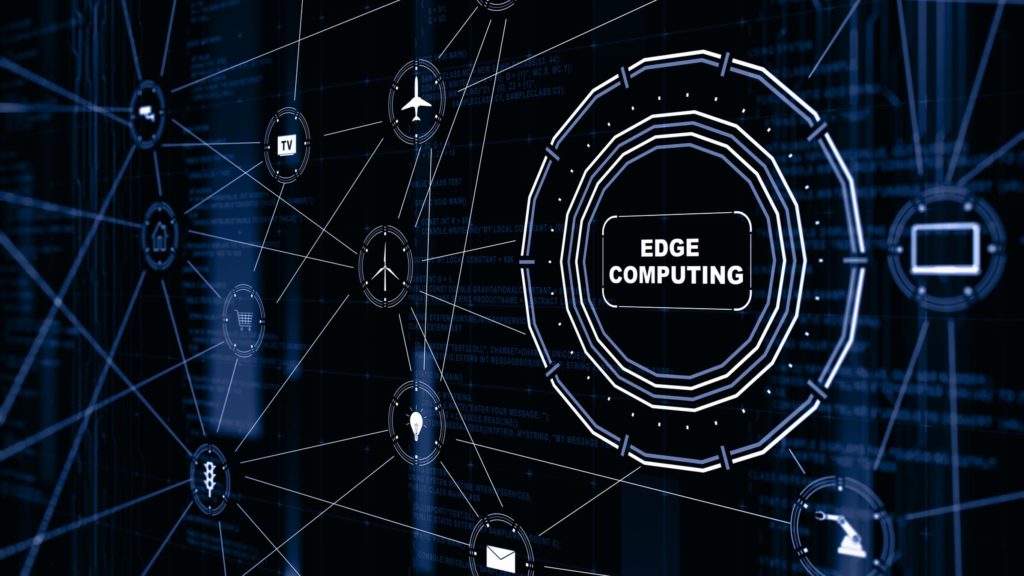In a world increasingly dominated by data, the traditional model of sending all information to a centralized cloud for processing is becoming slow and inefficient. This is where edge computing emerges as a revolutionary paradigm. Instead of relying on distant data centers, edge computing processes data closer to its source, at the “edge” of the network. This fundamental shift is not merely a technical upgrade; it’s a profound re-imagining of how we process and interact with information. It promises to unlock a future of instantaneous response times, enhanced security, and a new wave of intelligent applications that were once limited by the constraints of latency. This comprehensive article delves into the profound impact of edge computing, exploring the foundational technologies that make this a reality, the diverse applications that are already reshaping industries, and the immense opportunities and critical challenges that lie ahead as we build a faster, smarter, and more resilient digital world.
For decades, the “cloud” was the undisputed king of data processing. Centralized data centers, often located hundreds or even thousands of miles away, offered immense computational power and storage at a massive scale. This model works well for tasks where a few seconds of delay, or latency, isn’t a problem, such as streaming a movie or sending an email. But the rise of new technologies like autonomous vehicles, the Internet of Things (IoT), and real-time virtual reality (VR) experiences has made latency a critical bottleneck. Imagine an autonomous car needing to make a split-second decision to brake to avoid a collision. Sending the data to a distant cloud and waiting for a response is simply not an option. Edge computing solves this problem by bringing the processing power directly to the source of the data—to the car, to the factory floor, or to the smart city sensor.
The global push towards edge computing is not a single event but a confluence of technological advancements. The proliferation of powerful microchips that are both small and energy-efficient, the rapid deployment of high-speed 5G networks, and the maturation of artificial intelligence (AI) have all contributed to making edge computing not just a possibility, but a necessity. Companies from tech giants to industrial manufacturers are pouring billions into this new infrastructure, recognizing that the future of technology is not just in the cloud, but on the ground. As we continue to develop and deploy these distributed networks, we are not just speeding up our technology; we are creating a more resilient and intelligent digital nervous system that can operate effectively even in environments with limited or no internet connectivity.
The Pillars of Edge Computing

The power of edge computing is built on a sophisticated and interconnected technological foundation. Here are the core pillars that enable this new era of distributed processing.
A. The Internet of Things (IoT) as the Data Source
The primary driver of the edge computing revolution is the Internet of Things (IoT). This is a vast and growing network of billions of physical devices that are embedded with sensors, software, and other technologies to collect and exchange data. In a smart city, these are sensors in traffic lights, on bridges, and in public spaces. In a factory, they are sensors on assembly line robots and machinery. On a farm, they are sensors that monitor soil moisture and crop health. The IoT is the data-generating engine of the modern world, and the sheer volume and velocity of this data make it impossible to send it all to a central cloud. Edge computing provides a way to manage and process this data deluge right where it is generated.
B. High-Speed Connectivity and 5G Networks
For edge computing to function effectively, there must be a seamless and high-speed network to connect the edge devices to the local processing nodes. 5G networks are the ideal solution, providing the low latency and massive bandwidth required to connect millions of devices simultaneously. 5G enables a smart city’s traffic sensors to communicate with a local edge server in milliseconds, or allows a surgeon to control a robotic arm remotely without a noticeable delay. It is the critical “last mile” of the network that makes real-time edge processing possible for a wide range of applications.
C. Artificial Intelligence (AI) at the Edge
Processing data at the edge is not just about filtering; it’s about intelligence. Artificial intelligence (AI) and machine learning are being integrated directly into edge devices. A security camera, for example, can use an on-board AI chip to analyze video footage in real-time and only send an alert to a human when it detects a threat, rather than sending a continuous video feed to the cloud. This reduces network traffic, improves response times, and enhances privacy. This is a shift from a “dumb” sensor to an “intelligent” sensor that can make autonomous decisions.
D. The Edge Server and the Micro-Data Center
The “edge” is not a single point but a distributed network of local processing power. An edge server could be a small device in a factory that processes data from all the machinery on the assembly line, or it could be a small data center in a cell tower that processes data from all the smartphones and connected devices in a neighborhood. These micro-data centers are the hubs of the edge network, providing the local computational power to process data in real-time and send only the most important insights back to the central cloud for long-term storage and analysis.
Applications Across a Wide Range of Industries

The benefits of edge computing are not limited to a single sector; they are being applied to a diverse array of industries, creating new efficiencies and opportunities.
A. Autonomous Vehicles and Smart Transportation
In the world of autonomous vehicles, edge computing is a critical safety feature. A self-driving car generates gigabytes of data every second from its lidar, radar, and cameras. Processing this data on a distant cloud is impossible due to latency. The car must make split-second decisions to brake, steer, or accelerate, and it must do so on-board, at the edge. Furthermore, a smart transportation system can use edge computing in traffic signals and on-road sensors to communicate with vehicles in real-time, creating a safer and more efficient flow of traffic.
B. Industrial Automation and Smart Manufacturing
In industrial automation, edge computing is transforming the factory floor. By processing data from assembly line robots and machinery in real-time, edge computing can identify and fix a problem before it leads to a catastrophic failure. It can also be used to optimize the manufacturing process, making it more efficient and reducing waste. This is a shift to a “smart factory” that can learn and adapt to new situations autonomously, without human intervention. The benefits are a more resilient and productive manufacturing process.
C. Healthcare and Remote Patient Monitoring
In healthcare, edge computing is a powerful tool for remote patient monitoring. A wearable health device can collect a continuous stream of data on a patient’s vitals—heart rate, blood oxygen, etc. Instead of sending all this data to the cloud, the device can use on-board edge processing to analyze the data in real-time and only send an alert to a doctor if a critical event is detected, such as a sudden drop in heart rate. This can lead to a faster response time, better patient outcomes, and enhanced privacy, as sensitive health data is processed locally.
D. Media, Entertainment, and Gaming
In media and entertainment, edge computing is crucial for a high-quality user experience. For a live streaming event, edge servers can cache the content closer to the user, reducing buffering and improving video quality. In the world of cloud gaming, edge computing reduces latency, allowing for a more responsive and immersive gaming experience. It brings the power of a high-end gaming PC to a user’s local network, making it possible to play demanding games on a simple device without lag.
Challenges and the Future of Edge Computing
Despite its immense promise, the journey to a fully integrated edge computing world is not without significant challenges that must be addressed.
A. Security and Data Privacy
Distributing data processing to the edge creates a new and complex security and data privacy landscape. Each edge device, from a factory robot to a smart home appliance, is a potential point of failure that can be compromised. Securing these devices and the data they collect will be a major challenge. We will need to develop new security protocols and a clear regulatory framework to ensure that this technology is used to protect our data, not to exploit it.
B. Scalability and Management
Managing a distributed network of thousands or even millions of edge devices and servers is a massive challenge. A centralized cloud offers the benefits of simple management and a single point of control. In an edge computing world, a new system for scalability and management will be needed to monitor and update a vast network of devices, ensuring they are all running the latest software and operating securely. The development of intelligent, AI-powered management systems will be a critical part of this.
C. Interoperability and Standardization
The edge computing ecosystem is currently fragmented, with a wide range of devices, software, and platforms from different vendors. For the ecosystem to work together seamlessly, there must be a high degree of interoperability and standardization. The lack of universal standards can create a situation where different edge devices and local servers cannot communicate with each other, limiting the potential of the technology. Governments and industry leaders must collaborate to develop open standards that foster innovation while ensuring compatibility.
D. Cost and Infrastructure
While the cost of microprocessors is falling, the initial investment in building a new edge computing infrastructure is still a major challenge. This includes the cost of new hardware, the deployment of 5G networks, and the development of new software. This is a multi-trillion-dollar undertaking that will require significant investment from both the public and private sectors. The long-term financial benefits, however, are immense, making it a wise and necessary investment for the future.
Conclusion
In conclusion, edge computing is a transformative paradigm shift that is fundamentally changing how we process and interact with data. By moving the computational power from a distant, centralized cloud to the “edge” of the network, closer to the source of the data, we are unlocking a new era of instantaneous response times, enhanced security, and a new wave of intelligent applications. This is not just a technological upgrade; it is a blueprint for a faster, smarter, and more resilient digital world. The foundational pillars of this revolution—the data-generating power of the IoT, the low latency of 5G, the intelligence of AI, and the distributed power of micro-data centers—are all working in synergy to create a new way of living and working.
The applications of edge computing are incredibly diverse and exciting, from the life-saving potential of real-time processing in autonomous vehicles and the increased efficiency of a smart factory to the improved healthcare of remote patient monitoring and the seamless experience of cloud gaming. This is a revolution that will touch every major industry, creating new opportunities for innovation and economic growth. The future is not about replacing the cloud, but about creating a more powerful and distributed ecosystem where the cloud provides the long-term storage and analysis, and the edge provides the real-time, mission-critical processing.
However, as we embrace this new era, we must also be mindful of the challenges that lie ahead. The issues of security, scalability, and standardization are not footnotes; they are central to the responsible development of edge computing. We must build a new security architecture that can protect a decentralized network, and we must create new management systems that can oversee a vast and distributed network of devices. The future of edge computing is not just about technology; it’s about building a better, more responsive, and more secure digital world. The journey has begun, and the potential is truly limitless.



